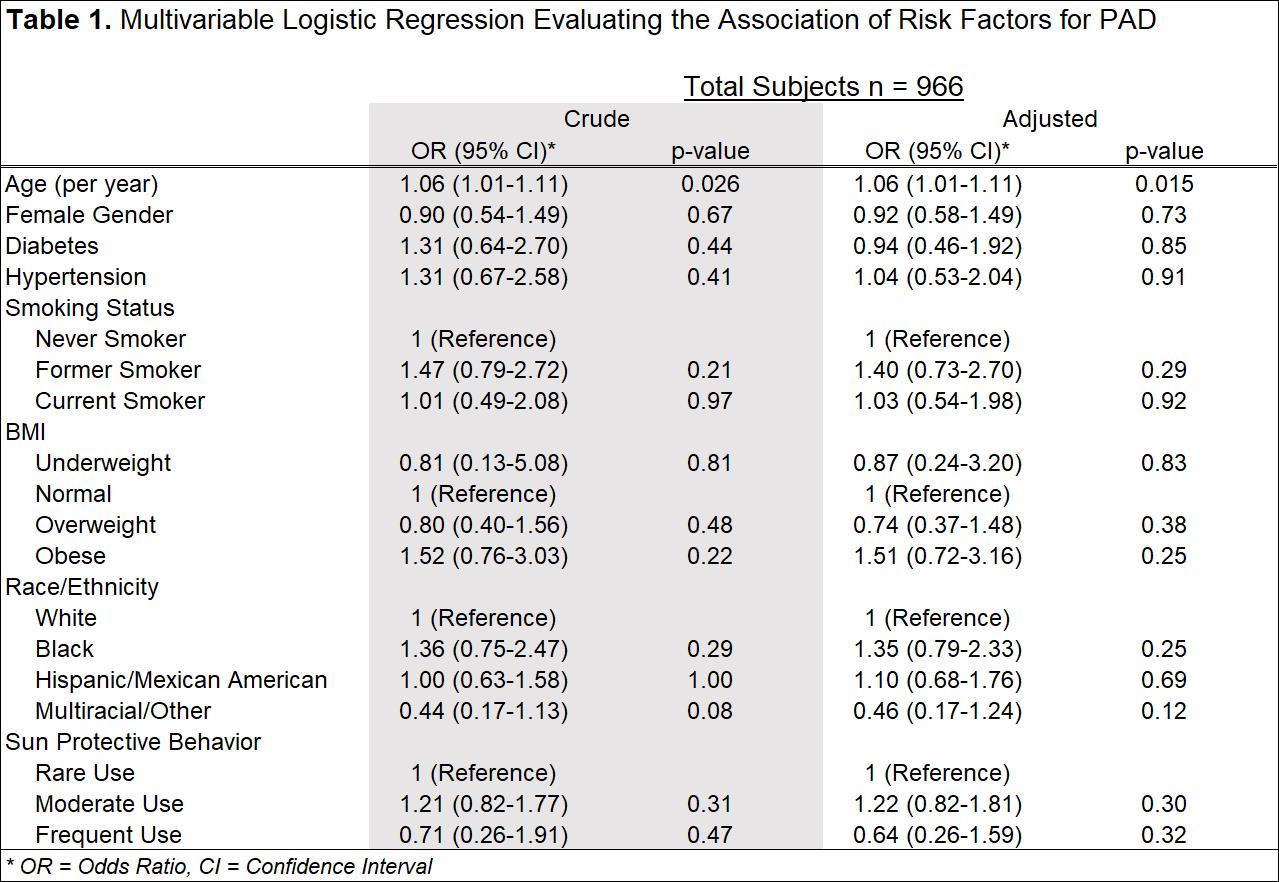Sun Protective Behavior Is Not Associated With Peripheral Artery Disease In NHANES Adult Subjects
Zachary J. Wanken, MD MS1, J. Aaron Barnes, MD2, Mark Eid1, Philip P. Goodney, MD MS1.
1Dartmouth-Hitchcock, Lebanon, NH, USA, 2Dartmouth-Hitchcock, LEBANON, NH, USA.
OBJECTIVEStudies have shown that sun exposure can directly lower blood pressure and is associated with lower cardiovascular mortality long term. However, an association between sun exposure and peripheral artery disease (PAD) has not been evaluated. We aimed to determine the association between sun protective behavior and PAD in a representative sample of the United States adult population.
METHODSThe National Health and Nutrition Examination Survey (NHANES) concurrently included sun protective behavior questions and ankle-brachial index (ABI) measurements during the 2003-2004 cycle. A composite measure of sun protective behavior was compiled from four survey questions yielding three groups: rare use, moderate use, and frequent use. PAD was defined as measured ABI <0.9 or >1.3. Multivariable logistic regression was used to evaluate the association between sun protective behavior and PAD. Sensitivity analyses were performed by including lower extremity amputation in the definition of PAD, limiting the definition of PAD to ABI <0.9, and stratification by race.
RESULTSA total of 966 NHANES adult subjects were included for analysis. Mean age was 48.5 years and one in ten subjects had PAD (10.3%). Prevalence of PAD was highest among subjects who identify as black (13.4%) and lowest among subjects who identify as multiracial or other race (4.7%) and differences in prevalence across races was not statistically significant (p=0.18). Cardiovascular comorbidity burden was low in our group overall with low prevalence of coronary artery disease (4.4%), congestive heart failure (1.1%), and stroke (1.6%). Most individuals practiced sun protective behavior rarely (51.7%) and there were no significant differences in sun protective behavior between racial groups (p=0.16). Multivariable regression showed no significant association between PAD and sun protective behavior in crude or adjusted models (Table 1). These findings were robust to sensitivity analyses stratified by race and alternative definitions of PAD.
CONCLUSIONWe did not find a significant association between sun protective behavior and PAD among NHANES adult subjects. 
Back to 2020 ePosters
